June: All we’ve longed for is now at hand
Frontenac State Park Association newsletter
June 2025 (Vol. 3, No. 6)
Comments, contributions, compliments, complaints? Reach your newsletter editor at pamelamarianmiller@gmail.com.

June: All we’ve longed for is now at hand
If you’re conscious and breathing, we don’t have to tell you how welcome June is. Minnesotans have endured a lot lately, from an oddball winter with little snow, to a drought-dreary early spring, to daily news blasts that make us want to curl up and go back into hibernation. But, say — just for a moment or two, forget all that. The beauty of June is mightier than any worries.
We highly recommend passing some June days in Frontenac State Park. You can visit on your own and commune with quiet nature with no one pestering you, but you also might want to consider these thoughtful, friendly activities sponsored by your Frontenac State Park Association. From our calendar to yours:
Tuesday, June 3, 10-11 a.m.: Nature Explorers class on fish for preschoolers. Join instructor Sara Holger of Project Get Outdoors and FSPA volunteers for a merry hour of fun and learning at and outside the main picnic shelter. Children must be accompanied by an adult.
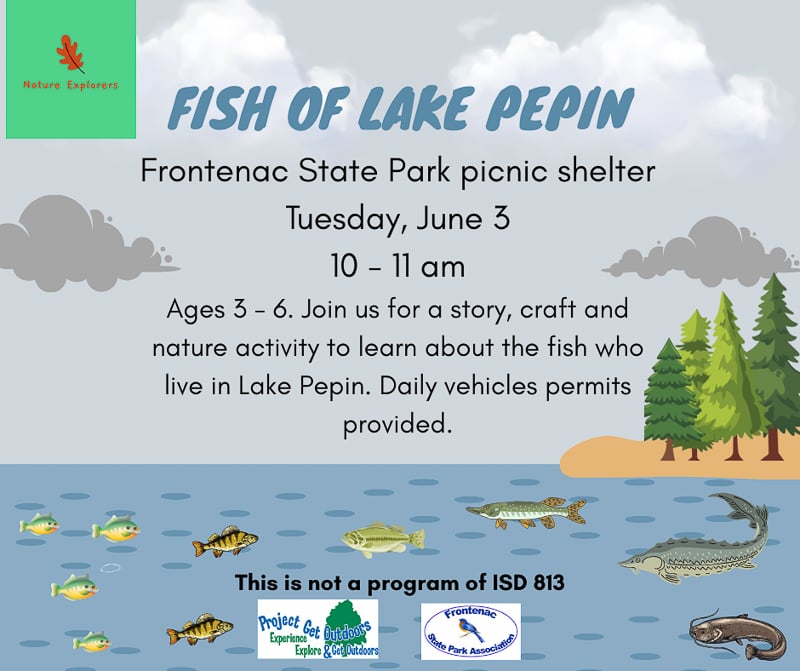
Saturday, June 7, 10-11 a.m.: Guided nature walk with Bruce Ause. Meet at the campground kiosk for a nature walk with interpretive naturalist and master of the dry joke Bruce Ause. There’s a reason Bruce’s weekly summer walks are by far the park’s most popular event offering – come see why!
Saturday, June 14, 10-11 a.m.: Guided nature walk with Bruce Ause. Meet at the campground kiosk for a nature walk with interpretive naturalist Bruce Ause.
Saturday, June 14, 10 a.m.-noon: Guided walk focused on post-fire ecology with park manager Jake Gaster. Learn about the close and fascinating kinship between fire and thriving native species. Meet at park headquarters.
Saturday, June 21, 10-11 a.m.: Guided nature walk with Bruce Ause. Meet at the campground kiosk for a nature walk with interpretive naturalist Bruce Ause.
Saturday, June 28, 10-11 a.m.: Guided nature walk with Bruce Ause. Meet at the campground kiosk for a nature walk with interpretive naturalist Bruce Ause.
Saturday, June 28, 9-11 a.m.: Guided bird walk with Janet Malotky and Steve Dietz along the Prairie Loop Trail. Meet at the ranger station parking lot. We’ll look for prairie birds, including Eastern Meadowlarks, Dicksissels, Eastern Bluebirds, American Kestrels, sparrows such as Henslow and Clay-colored, and others. The trail is mowed grass without much elevation change. Bring your binoculars or borrow some from the park office. Questions? Email janetmalotky@gmail.com.
Tuesday, July 1, 10-11 a.m.: Nature Explorers class on rocks for preschoolers. Join instructor Sara Holger of Project Get Outdoors and FSPA volunteers for a merry hour of fun and learning at and outside the main picnic shelter. Children must be accompanied by an adult.
Saturday, July 5, 10-11 a.m.: Guided nature walk with Bruce Ause. Meet at the campground kiosk for a nature walk with interpretive naturalist Bruce Ause.
Saturday, July 12, 9-11 a.m.: Guided bird walk in campground area with Janet Malotky and Steve Dietz. Meet at the campground shower building for a walk through a mixed habitat of prairie and woodland looking for nesting birds that specialize in these areas, including Baltimore Orioles and perhaps some Orchard Orioles, Eastern Bluebirds, Clay-colored Sparrows and up to six species of woodpeckers. The trail is well-maintained mowed grass. Bring your binoculars or borrow some from the park office. Questions? Email janetmalotky@gmail.com.
Saturday, July 12, 10-11 a.m.: Guided nature walk with Bruce Ause. Meet at the campground kiosk for a nature walk with interpretive naturalist Bruce Ause.
Saturday, July 19, 10-11 a.m.: Guided nature walk with Bruce Ause. Meet at the campground kiosk for a nature walk with interpretive naturalist Bruce Ause.
Saturday, July 26, 10-11 a.m.: Guided nature walk with Bruce Ause. Meet at the campground kiosk for a nature walk with interpretive naturalist Bruce Ause.
Saturday, July 26, 11 a.m.-12:30 a.m. Guided fungi walk with Pam Miller. We’ll walk along an unscouted park firebreak trail, talk about the science of fungi, and hope to find midsummer edibles such as chanterelles and chicken of the woods, but no guarantees! Guaranteed: An interesting walk! Meet at the campground kiosk. Wear closed shoes and long pants and bring bug spray. Questions? Email pamelamarianmiller@gmail.com.
Saturday, July 26, 7 p.m.: “Starry, Starry Nights” program with the Rochester Astronomy Club, main picnic shelter/upper parking lot. Those of you who have attended these before know how magical they are. We start with a short informational program in the picnic shelter, then move outside as darkness falls to watch the skies through amazing telescopes provided by Rochester Astronomy Club members, who also are great at describing what we’re seeing. Especially exciting for kids interested in science.
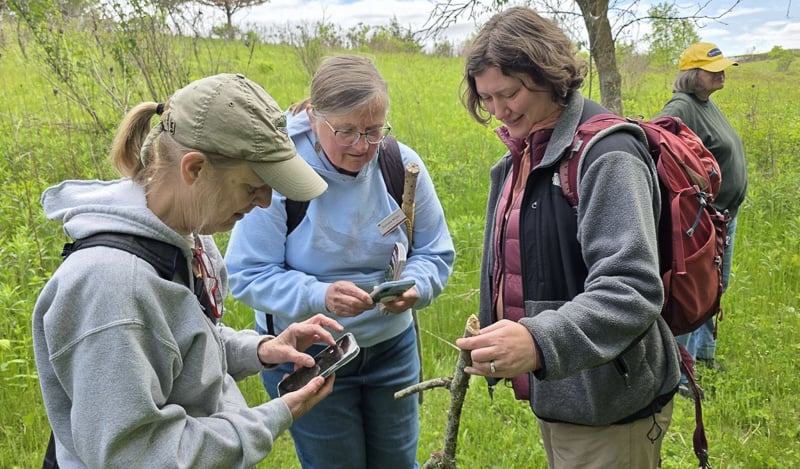
What we did in May
We want to give a shout-out to Frontenac State Park Association volunteers for all they did to make our beloved park even more welcoming than usual in May. FSPA member Jeneann Oppedahl spearheaded a busy Saturday in which more than 35 volunteers showed up to trot along Sand Point Trail and lug back the (mostly flood- or wind-scattered) litter they found near the trail and/or shores. From barbed wire to an ancient kid’s chair to tires to blue barrels to lighters, bait containers, tennis balls, beer cans, flip-flops and Crocs, we found it all. (Yep, the ancient pickup we’ve noted in the past is still buried near the trailhead; we left it there out of respect for history and a total lack of ability to unearth the big lug.) This trail, famous for warblers, flood-plain and shore birds, is now largely pristine. Come check it out!
A special tip of the hat to FSPA member Deane Karli, who regularly monitors the trail and hauls out even more trash to keep it beautiful. Thank you, Deane. We appreciate you!

Other things we did in May:
FSPA members Bruce Ause, Steve Dietz, Janet Malotky and Pam Miller led popular guided nature walks. And FSPA members packed the main picnic shelter for our May 15 quarterly meeting, reviewing our activities, making plans for the rest of the year, getting updates from rangers Jake Gaster and Amy Jay, and sharing tales from the outdoors.
Steve, Janet and fellow FSPA member and photographer Earl Bye each taught a workshop — on iNaturalist, birdwatching apps such as Merlin and eBird, and wildlife photography, respectively.
We’d also like to praise two exceptional nature blogs that celebrate the beauty and science of our Driftless Area. Bruce Ause’s Wacouta Nature Notes and Marge Loch-Wouters’ Hiking the Driftless Trails are priceless resources and terrific reads for lovers of our beautiful area. And we thank both of them for writing frequently about Frontenac.
Best of all, YOU, our nature-loving friends, flocked to the park for peace, beauty and adventure. Thank you to all of you for supporting Frontenac State Park!
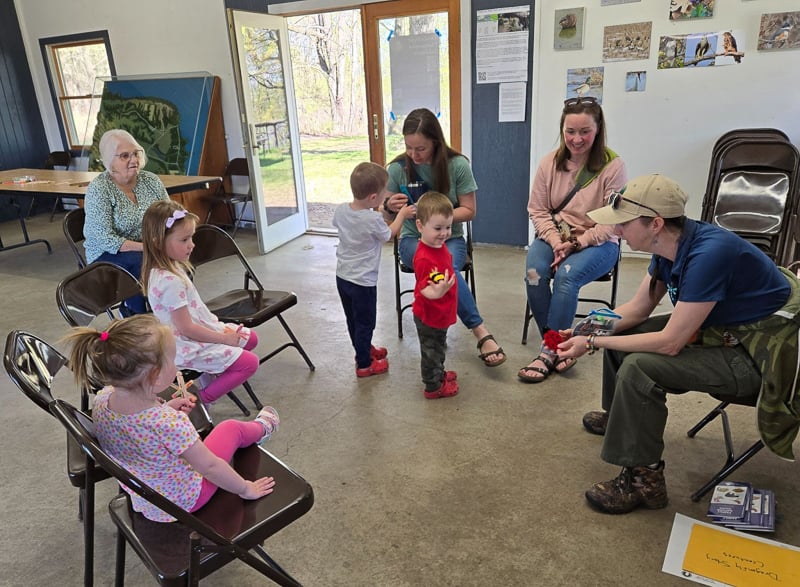
Prairie Dreams: A trail of nature quilts
FSPA is excited to have received a grant from the Southeast Minnesota Arts Council to present a new art event, Prairie Dreams. This open-call exhibition of quilts by regional makers will be displayed on flag stands along a prairie trail in Frontenac State Park for one very special day in June 2026. We’ll have much more information about how to participate in August. Meantime, fire up those prairie dreams, fiber artists of southeastern Minnesota!

Bird note: The good, the sad, and the buggy
By Janet Malotky, Minnesota Master Naturalist volunteer
It was a good May for birders in Frontenac State Park. If you were out and about, you probably noticed an unusually large number of binocular-wielding folks along Highway 61 and Goodhue County Road 2 near the lakelet and also on the trails. What was that all about? Let me fill you in.
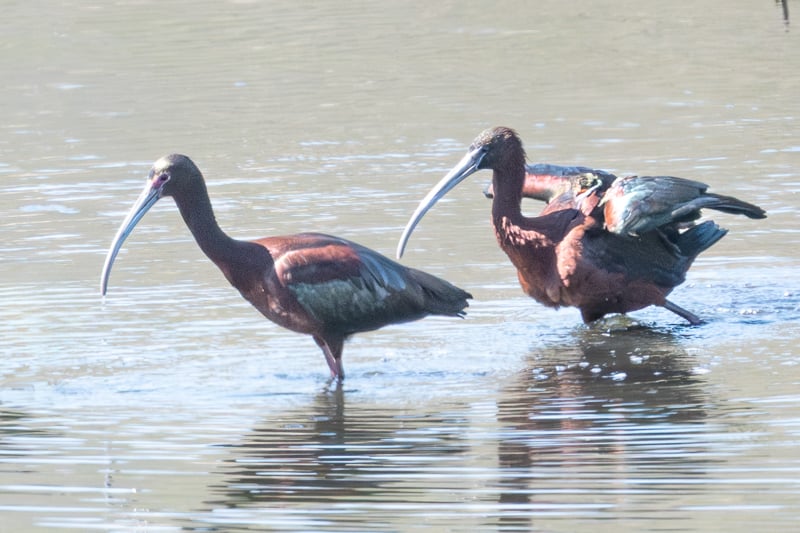
Last month I mentioned that the lakelet’s low water level created mudflats that were a boon to the shorebirds (long-legged waders) migrating through at the time. This resulted in the presence of birds we don’t usually get to see feeding at the lakelet. They were visible at relatively close range over a relatively extended period, and included less common birds like Wilson’s Phalaropes, rare birds like White-faced Ibises, and an even more rare Glossy Ibis.

Plus, there was a Hudsonian Godwit at the Sand Point beaver pond. Reports of these rare birds and viewing opportunities brought flocks of excited birders to the park; thus the clusters of folks with scopes and binoculars along the roadways.
These exciting bird arrivals coincided with the beginning of warbler migration through our area, beautifully timed by nature to the rise of dragonflies, moths, butterflies, clouds of gnat-like insects, and all the other bugs along park shorelines and over the prairies — just the fuel warblers need to recharge before continuing their remarkable flights to their breeding ranges north of here. Warbler migration is so wonderful to experience in our area that it draws an annual migration of birders each May, the largest gathering of which is known as Warbler Weekend, sponsored by the St. Paul Bird Alliance. I will write about this event with its long history in a future Bird Note.
There was a bit of a sad note in the Frontenac State Park bird world in May. Last month I mentioned our excitement that a Sandhill Crane was nesting in plain sight on the lakelet. We kept a vigil, observing the pair from a distance at least once each day for their month on the nest.
And then the probable hatching date came and went in early May. “Birds of the World” says 30 to 32 days is the expected incubation period. The parents were still brooding the egg when we left town for our daughter’s wedding on May 24, probably about 50 days of incubation. They were beginning to look sad and dejected. Or maybe that was just us.

Though there are daily miracles and wonders in nature, like the timing of bug life and warbler migration, a fresh and fuzzy Sandhill Crane colt on the lakelet is not likely to be one of those this year. Alas.
Notes from the field: Learning to like lichen
By Steve Dietz, Minnesota Master Naturalist volunteer

Probably in every field there is a class of potential objects of study that seem to defy reasonable understanding. What birder isn’t familiar with the class of LBB — little brown birds, also known as sparrows (mostly)? With time and practice, one may come to love and appreciate the differences between a Henslow’s and a Harris’s and a Lincoln’s sparrow, besides their names.
But what is the way into this knowledge? What do the expert and knowledgeable amateur look for to differentiate one thing from another? For instance, I was amazed to hear my sister-in-law, who has studied mosquitos for more than 40 years, say that it’s very difficult to identify certain of the spring species in the Aedes genus, doing so primarily by the length and curvature of an accessory tooth on the claws of their feet. C’mon! I have no ability to learn this skill, but I’m glad she has it.
Over the years, I have marveled at lichens and mosses and probably taken hundreds of photos of them, often as backdrop for some other more meaningful or at least understandable flora. So given my aforementioned lack of plan to become a lichenologist, I was excited to join a workshop on lichens by “Midwest Mycologist” Tanner Barnharst, the author of a newly minted (spored?) “Minnesota Lichen Guide: Basic Identification for Common Lichens in Minnesota,” available online as a PDF download, or you can purchase a paper copy.
The workshop was wonderfully informative, but I won’t pretend to have any knowledge of specific lichens that I can still remember these couple of weeks later. I do, however, have a process. The first of these, of course, is to notice, which as both Mary Oliver and Tanner Barnharst say, leads you to notice more and more.
Especially with a close-up view. Put your eye right up to the lichen. If possible, use one of those 10x lenses from middle school science and marvel at the 3D world hiding in plain sight. To me, it’s as complex a ’scape as the CGI scenes of Coruscant, the galactic capital in the TV series “Andor.”
Many flora and fauna guides pose a series of questions to help identify a species. For birds, Merlin’s key is five simple questions: where, when, size, colors and what it was doing. A wildflower or tree dichotomous key is similar, if a bit more precise. According to Barnharst, there are four key questions with lichen that can get you to at least the genus level, if not species.
Habitat: What is the lichen growing on: rock, soil or mossy logs, tree (deciduous or conifer)?
Morphology:
Foliose: Lichens look like leafy pieces on top of their substrate.
Fruticose: Lichens grow up and out from their substrate, think three-dimensional. They can look like small trees, bushes, or trumpets.
Crustose: Lichens grow firmly attached to their substrate and are almost impossible to remove without destroying the lichen. They can look like they are painted on.
What color is the lichen? Generally, foliose are yellow, fruticose green and crustose orange; but when wet, some lichen change colors.
Reproductive structures: apothecia (asexual) or soredia (sexual). Read the manual!
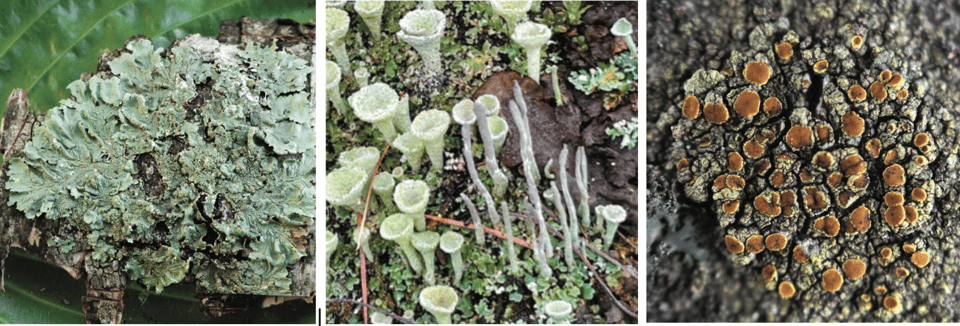
Naming is not everything, but it is not nothing. It is often the result of understanding what differentiates one species from another, and can provide an “inexplicable delight” as Mary Oliver reminds us in “Bird in the Pepper Tree,” while doing no harm to the named species.
Don't mind my inexplicable delight
in knowing your name,
little Wilson's Warbler
yellow as a lemon, with a smooth, black cap…
Just do what you do and don't worry, dipping
branch by branch down to the fountain....
A name is not a leash.
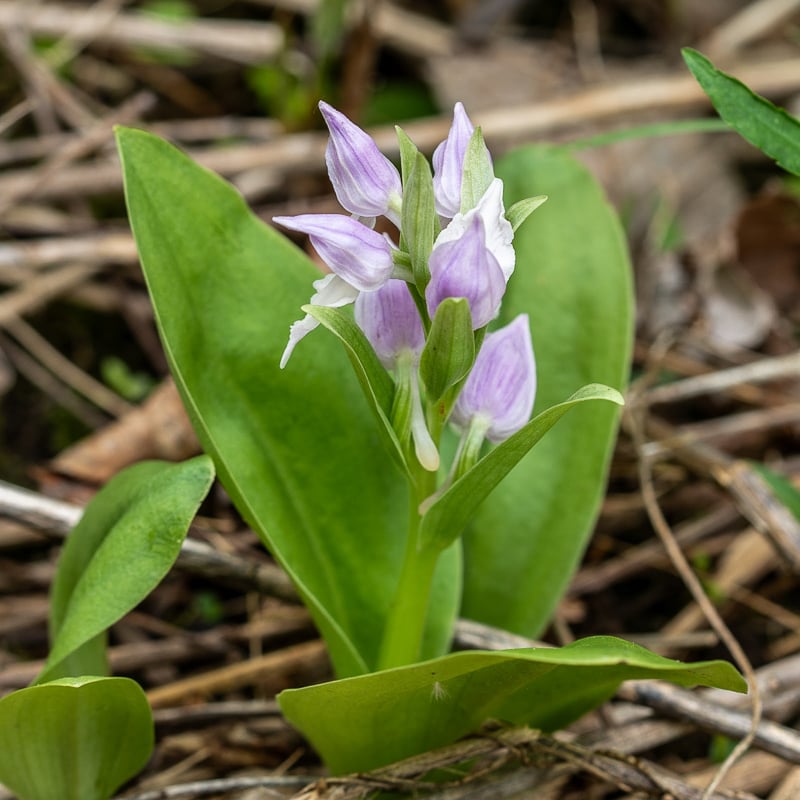
A fungi walk, and the talk it inspired
By Pamela Miller, Minnesota Master Naturalist volunteer
In May, your newsletter editor led a park walk focused on fungi that drew about 22 people, most of whom didn’t (immediately) flee. All were delightful, especially the kids – thank you, fungi walkers!
Helping keep your newsletter editor humble (always a worthy cause) was that we found no coveted morel mushrooms on this walk. Helping keep us all happy was what we did find – beautiful pheasantbacks (Dryad’s saddle) and oyster mushrooms; mysterious, delicate wee fungi and year-old polypores; things not fungi, like a beautiful showy wild orchis spotted by a couple of eagle-eyed participants, and all manner of other flora and fauna.
One walker wandered off-trail to study ostrich fern fronds and how they spread spores, and brought us back examples. Several folks combined fungi-hunting with bird-watching, peering high into the canopy when their Merlin apps identified a Baltimore Oriole or Red-eyed Vireo. Kids of middle-school age proved to be budding scientists, plunging into the thick woods off-trail to fetch strange little fresh fungi and other interesting wild things. What fun! Can’t wait for our next fungi walk in July (see the FSPA calendar above for details), when we hope midsummer edible favorites chanterelles and chicken of the woods will greet us.

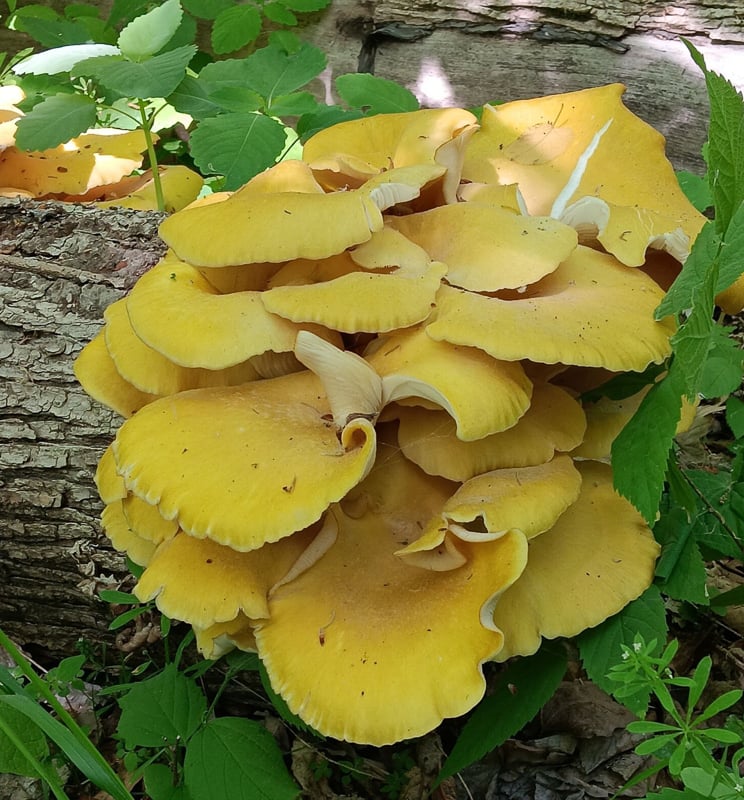
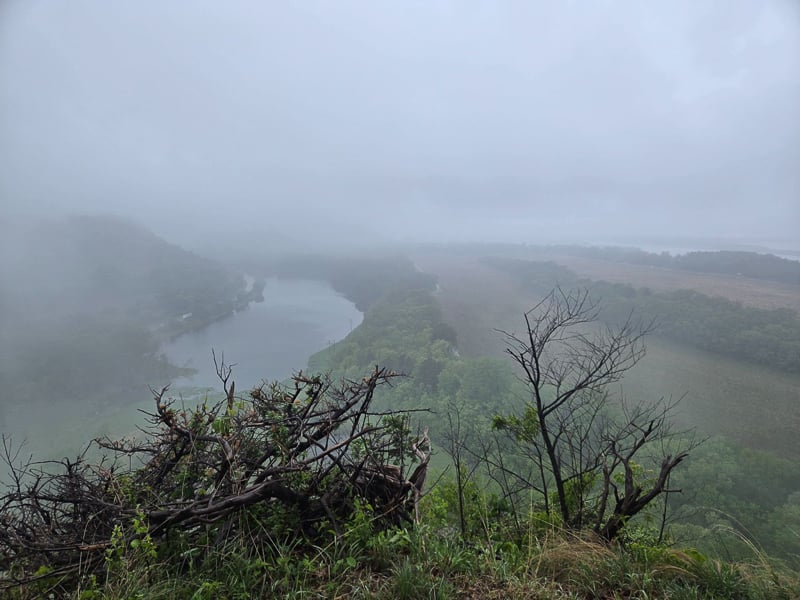
Poem of the month
Note to readers: You may notice that we often choose old poems for this monthly feature. That’s partly so we don’t violate copyright law. But even moreso, it’s because in some of these older poems, written during our great-grandparents’ lifetimes, we recognize a pure and poetic appreciation of nature that we don’t always experience in our age of groovy apps and a precipitous reduction in wild land acreage. We especially love this classic ode to spring, with its universal praise and lament: “Joy comes, grief goes, we know not how…” So true, eh?
“WHAT IS SO RARE AS A DAY IN JUNE?”
By James Russell Lowell (American; 1819-1891)
And what is so rare as a day in June?
Then, if ever, come perfect days;
Then Heaven tries earth if it be in tune,
And over it softly her warm ear lays;
Whether we look, or whether we listen,
We hear life murmur, or see it glisten;
Every clod feels a stir of might,
An instinct within it that reaches and towers,
And, groping blindly above it for light,
Climbs to a soul in grass and flowers;
The flush of life may well be seen
Thrilling back over hills and valleys;
The cowslip startles in meadows green,
The buttercup catches the sun in its chalice,
And there's never a leaf nor a blade too mean
To be some happy creature's palace;
The little bird sits at his door in the sun,
Atilt like a blossom among the leaves,
And lets his illumined being o'errun
With the deluge of summer it receives;
His mate feels the eggs beneath her wings,
And the heart in her dumb breast flutters and sings;
He sings to the wide world, and she to her nest,
In the nice ear of Nature which song is the best?
Now is the high-tide of the year,
And whatever of life hath ebbed away
Comes flooding back with a ripply cheer,
Into every bare inlet and creek and bay;
Now the heart is so full that a drop overfills it,
We are happy now because God wills it;
No matter how barren the past may have been,
'Tis enough for us now that the leaves are green;
We sit in the warm shade and feel right well
How the sap creeps up and the blossoms swell;
We may shut our eyes but we cannot help knowing
That skies are clear and grass is growing;
The breeze comes whispering in our ear,
That dandelions are blossoming near,
That maize has sprouted, that streams are flowing,
That the river is bluer than the sky,
That the robin is plastering his house hard by;
And if the breeze kept the good news back,
For our couriers we should not lack;
We could guess it all by yon heifer's lowing,
And hark! How clear bold chanticleer,
Warmed with the new wine of the year,
Tells all in his lusty crowing!
Joy comes, grief goes, we know not how;
Everything is happy now,
Everything is upward striving;
'Tis as easy now for the heart to be true
As for grass to be green or skies to be blue,
’Tis for the natural way of living:
Who knows whither the clouds have fled?
In the unscarred heaven they leave not wake,
And the eyes forget the tears they have shed,
The heart forgets its sorrow and ache;
The soul partakes the season's youth,
And the sulphurous rifts of passion and woe
Lie deep 'neath a silence pure and smooth,
Like burnt-out craters healed with snow.
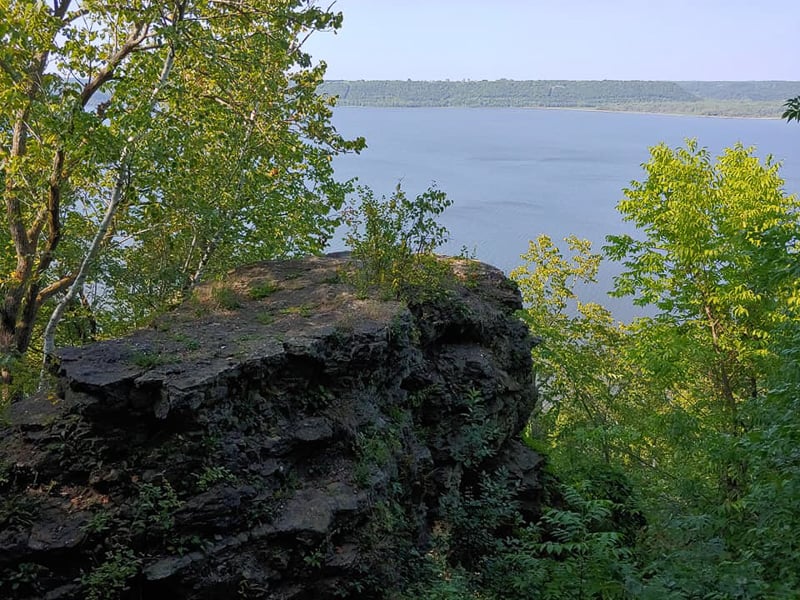
Interested in joining the FSPA?
If you are a member, thank you! You help us pursue our mission of supporting this treasured park in myriad ways.
If you’d like to join us, we’d be honored to have your support. Dues are $25 per year for an individual, $35 for dual/family membership. Here’s a link with signup information.
A reminder that joining us occasionally to help with volunteer efforts is awesome too, even if you’re not a member. The FSPA’s goals are to support Frontenac State Park activities and share our love of this beautiful park with as many people as possible.
To sign up to regularly receive this free, spam-free monthly newsletter, click on “Subscribe” below. Feel free to send questions or comments to your newsletter editor at pamelamarianmiller@gmail.com. Questions about the FSPA? You can reach hard-working FSPA chair Steve Dietz at stevedietz@duck.com.

Handy links for more information and education
Frontenac State Park
Frontenac State Park Association
If you take pictures in the park, tag us on Instagram
Frontenac State Park bird checklist
Frontenac State Park on iNaturalist
Parks & Trails Council of Minnesota
Website for our township, Florence Township
Minnesota Master Naturalist programs
Red Wing Environmental Learning Center
Lake City Environmental Learning Program on FB
Visit Lake City
Bruce Ause’s Wacouta Nature Notes blog
Marge Loch-Wouters’ Hiking the Driftless Trails blog
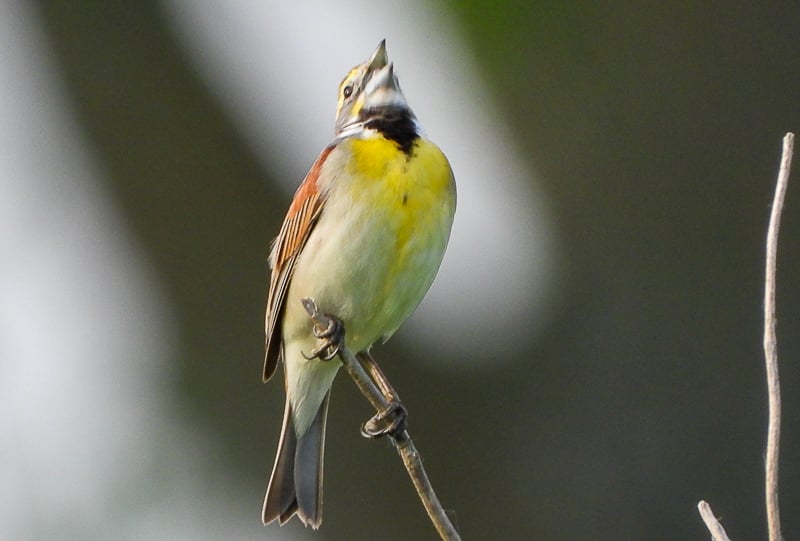
Frontenac State Park staff
Jake Gaster, park manager; Amy Jay, assistant park manager; Amy Poss, lead field worker
Parting shots
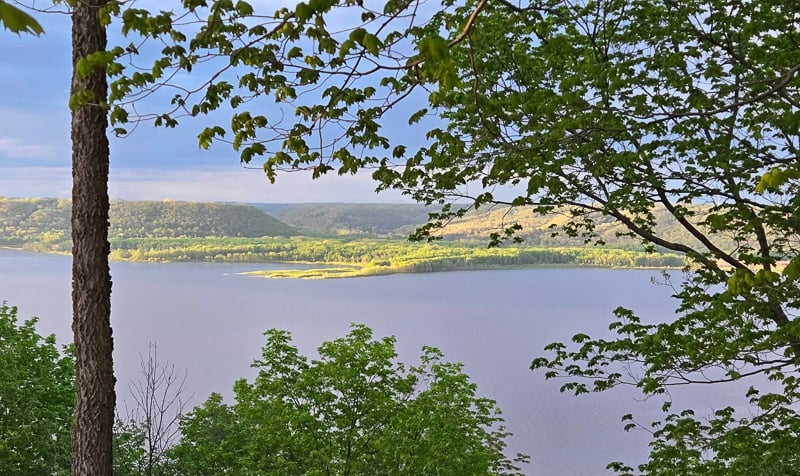

Thank you, readers and park visitors!
This is Volume 3, No. 6 of the Frontenac State Park Association newsletter, which was launched in April 2023.
Here’s where to browse the full archives of this newsletter.